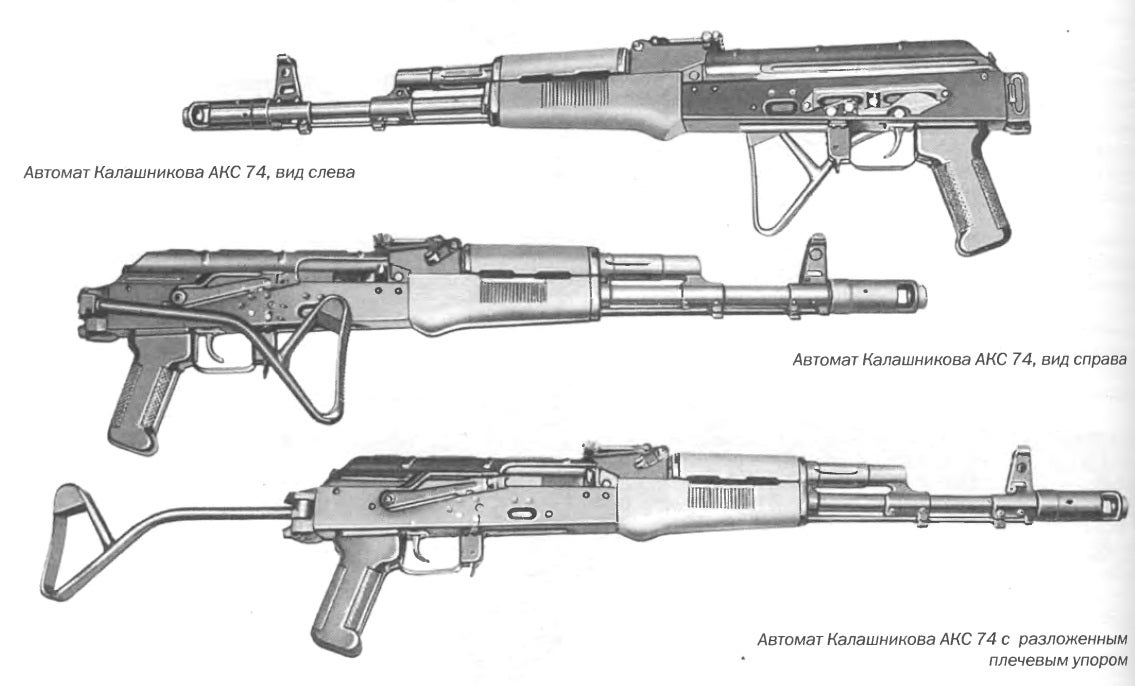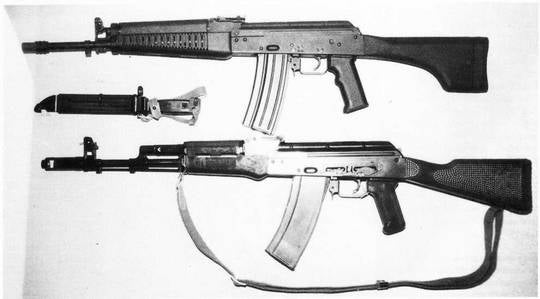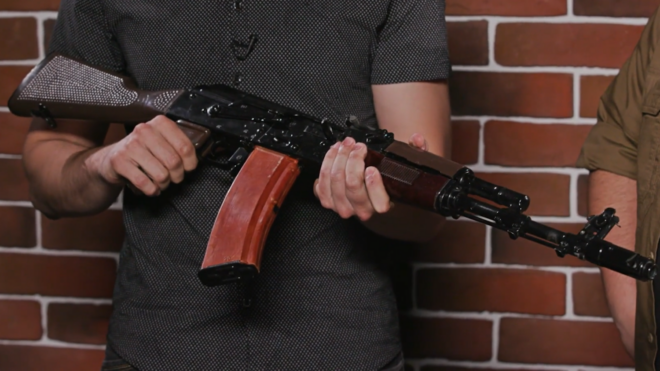In Part 1 of this article, I talked about the history of AK rifle production in East Germany, and Part 2 was dedicated to my personal experiences with East Germany AKs. In Part 3, I want to talk about less-known variants of DDR AKs and their destiny after the Berlin Wall fell and communism in East Europe collapsed.
In 1974, the Soviet Union accepted into service a new 5.45×39 round and started replacing old stocks of AKs chambered in 7.62×39. Other Warsaw Pact countries were supposed to follow suit, but in reality, few actually did. Even under puppet governments, countries were slowly realizing that the Soviet Union was moving towards an inevitable collapse.
The implementation of the new caliber was dragging along. For example, only in 1986, Romania started producing their 5.45 rifles. Poland only started making their 5.45 AK, “Tantal”, in 1988. The Czech Republic and Hungary never really got on with the manufacturing of a 5.45 rifle.
But East Germany was the most tightly controlled state in the Warsaw Pact, and they, being good comrades, were among the first who signed an agreement for license production of AK 74. It happened on May 15, 1981, and a new rifle received the designation MPi-AK-74N.
The markings on the receiver of East German AK 74s are identical to a Hungarian AK: infinity sign for full-auto mode and “1” for semi-automatic. The rear sight of DDR AK 74 is marked with the letter “K” instead of the letter “N” used on previous variants of East Germany AKs. All DDR AK 74 had the side rail to attach scopes – something that the Russian factory started doing only 10 years later, on AK 74M.
One more advancement East Germans had way earlier compared to the Soviet factory – the carbine version of AK 74. Russian AK 105 appeared only in 1995, while production of DDR MPi-AKS-74NK started around 1986, almost 10 years earlier
Generally, those AK74s did not see as much combat as previous versions of East Germany AKs chambered in 7.62×39. However, some DDR AK 74s have seen plenty of action.
Once upon a time in Somalia, I had a chance to work with a gentleman who was a former Croatian special forces officer. He noticed my T-shirt that said “5.45” and shared some stories about the East German AK 74 they used.
In Croatia, the DDR AK 74 is called “kostolomac”, which translates as “bone breaker/bone crusher”. The last time this gun made news in Croatia was in 2020 when a police officer was wounded in a shootout in the city of Zagreb near a government building. The attacker used an AK74.

East German AK 74 with folding stock
How did those guns end up in Croatia? Germany was quite supportive of Croatia’s independence, so a large amount of German-made firearms found their way into Croatia in the ’90s.
Naturally, the stocks of East Germany AKs were among the first guns sent abroad, since the new united Germany did not need weapons developed for the Warsaw Pact logistics chain.
“Kostolomac” was used by Croatian special forces for a while and always received a lot of attention during joint training exercises with Western special units, which were familiar with AK 47, but often never seen an AK 74 before.
East German engineers also designed a 22 LR rifle so the soldier could train basic marksmanship skills using cheaper ammo. This gun used a standard steel magazine with a special insert inside that held 15 rounds of 22 LR.
By the early 80s, the Soviet government finally realized that by transferring technology for arms production to Warsaw Pact countries, it created enormous competition for itself. That is why in the licensing agreement for AK 74, the Soviets had a clause prohibiting the export of East Germany AKs. But once the cat is out of the bag, you can’t put it back.
East Germany had the technology and know-how and even under communism, the government valued hard currency more than the feelings of their Soviet comrades. To circumvent the export restrictions, design engineers developed a totally new rifle, not an AK 74 at all.

Wieger rifle (top) and East German AK 74 (bottom)
And since it wasn’t technically an AK 74, there were no restrictions on export. The new rifle was called STG-940 Wieger and is chambered in 5.56×45. It is a well-designed rifle with an ergonomic pistol grip, buttstock, and long handguard, all made of polymer.
It was a perfect gun for that time – the Communist block was falling apart, and countries wanted to switch to 5.56 ammo but retain familiar features of AK rifles they already used.
There was an entire family of weapons developed based on the Wieger rifle: STG-941 with a standard 16.53-inch barrel, STG-941 – same gun with the folding stock, STG-943 with a short barrel, STG-944, a light machine gun similar to RPK with a 19.7-inch barrel, and finally designated marksman rifle called PG-945.

Wieger rifle (top) and East German AKM with folding stock (bottom)
East Germany signed two contracts: 10,000 rifles were supposed to be sold to Peru and 7,500 to India. The future looked bright for the Wieger rifle. But at this point, the politics stepped in.
The Berlin Wall fell, and the government of the new United Germany decided to close down East German firearms manufacturing plants. The Suhl factory was not even allowed to finish production of the order for Peru and had to pay huge fines for failure to comply with contract obligations.
The factory ceased to exist, and the German government destroyed a lot of AK rifles they had in storage. Now, 35 years later, when the entire EU is struggling to find enough armaments and investing in new defense production, that decision seems especially short-sighted.
The author would like to thank Frank Iannamico and Konstantin Podgornov for all the information they provided for the article.
 Your Privacy Choices
Your Privacy Choices
